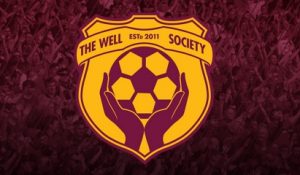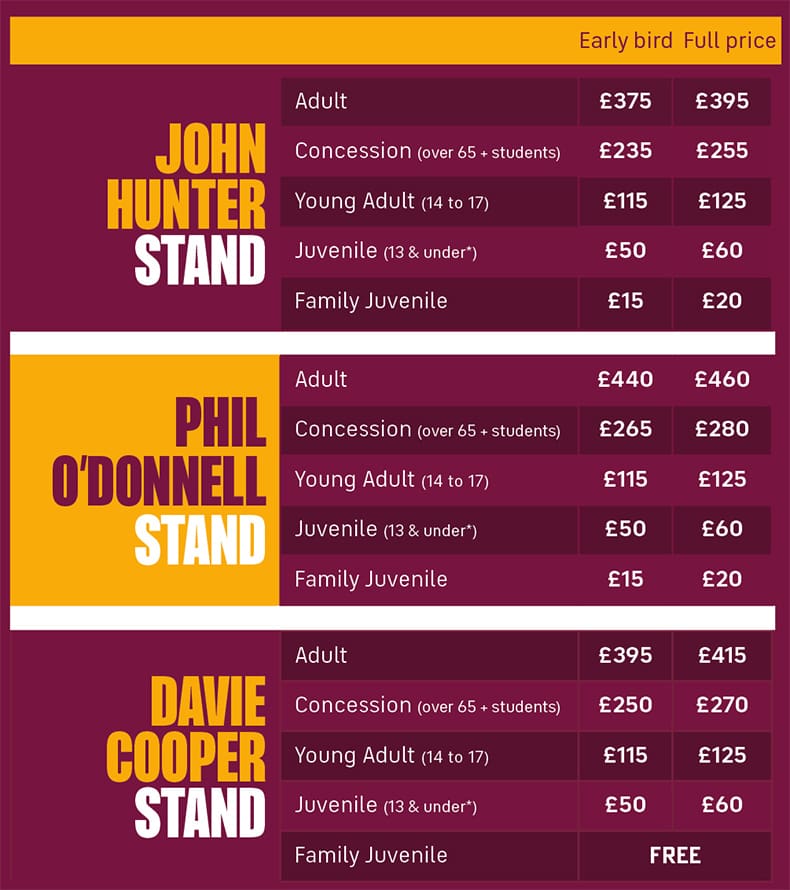We can confirm the price of tickets for three of this year’s Premier Sports Cup matches.
For our matches at Fir Park, we can confirm that a Season Ticket discount has been made available for Motherwell, Edinburgh City and Partick Thistle fans.
If you have a Season Ticket, an adult ticket will cost £10, with all concessions costing £5.
If you don’t have a Season Ticket, adults will be £12 and concessions will be £6.
Motherwell season ticket holders will have until the 11th July at 5pm to secure their own seat for the Edinburgh City match, with the ticket being added to their season card and until 25th July at 5pm for the Partick Thistle match.
Tickets for Motherwell fans are now available to buy online.
- Edinburgh City – click here
- Partick Thistle – click here
Montrose v Motherwell
We can also confirm pricing has been agreed with Montrose for our match on Tuesday 16 July.
Adult tickets will cost £12, with all concessions costing £6. There will be no discount for season ticket holders.
Details on how to buy will be communicated shortly when confirmed by Montrose.
Hospitality
There will be no hospitality available for the Edinburgh City match.
Cooper Bar will open from 12 noon serving food and drink to both home and away supporters.
Centenary Suite will open from 1pm for drinks only.
Hospitality is available for our match against Partick Thistle.
Cooper Bar will also open from 12 noon serving food and drink to both home and away supporters.
Combine the full experience of a match day along with exceptional and great value hospitality at Fir Park.
Centenary Suite
- 2-course lunch served to your table
- Pay bar available from 1pm, half-time and one-hour after the final whistle
- Half-time pie served with tea and coffee
- Match ticket
Price: £58
Kids Price: £28 (12 and under)
Cooper Box
- 2x complimentary drinks served to your box pre-match
- Access to Cooper Suite pre-match, half-time and at full-time for refreshments
- Half-time refreshments served in the Cooper Suite
- Indoor seat in an executive Cooper Box
Price: £44pp
Dress code for all areas is smart. No jeans, trainers or colours permitted.
To book, please phone our hospitality team on 01698 338003 or email: hospitality@motherwellfc.co.uk
Tickets for away supporters Below
Edinburgh City
Edinburgh City fans will be housed in Phil O’Donnell stand
Link to purchase full price tickets is here.
Edinburgh City have physical tickets for season ticket holders to purchase from their office at the discounted price
Partick Thistle
Partick Thistle fans will be housed in Tommy McLean stand upper
Link to purchase full price tickets is here.
Partick Thistle have physical tickets for season ticket holders to purchase from their office at the discounted price
New Catering Company
The club is delighted to be working with local business Tom, Dick and Harry’s Diner. The company operate cafes in Carluke and Overtown and will be providing the catering in the Cooper Bar this season on a match day, commencing on the 13th July at the Edinburgh City cup match.
Come along and support a local business and try out the new food menu.

































